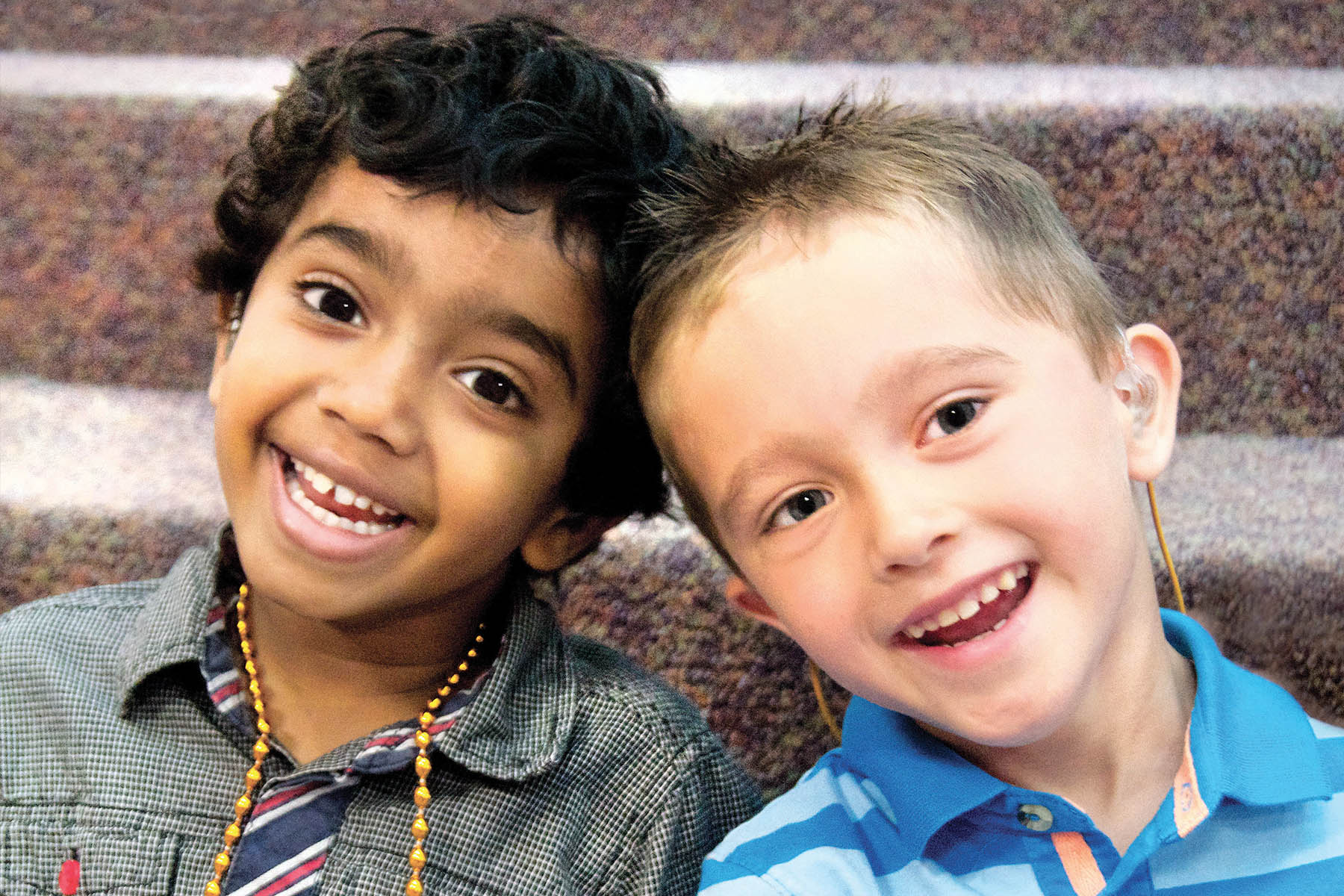Quality of life (QOL) is defined as the standard of health, comfort and happiness an individual or group experiences. QOL is often subjective, that is, it’s altered by an individual’s perception and can be influenced greatly by a difference or disability. Individuals with hearing levels that vary along the audiogram can experience a decrease in QOL at any point due to communication differences, communication breakdowns and difficulty listening in noise.
After St. Louis based pediatric otolaryngologist Dr. Judith Lieu and her colleagues observed a lack of validated hearing-related QOL measurements for children, they developed the Hearing Environments and Reflection on Quality of Life (HEAR-QL). They used this measure to discover how a child perceives the effects of their hearing loss as well as to help the clinician determine where intervention is warranted to improve the child’s overall well-being.
A subsequent study, “Quality of Life in Children with Hearing Impairment: Systematic Review and Meta-Analysis” (Roland et al., 2016), looked at relevant publications that evaluate QOL in school-aged children with hearing loss. The researchers found decreased QOL detected in these children in the domains of school function and social interactions. Dr. Lieu gave more insight on QOL and her study in an interview with CID:
It may be beneficial to hear about your interest in this particular topic. Will you share a little background?
While I was conducting my research in children with unilateral hearing loss, I spoke with many parents who described that their children faced many difficulties that were not measured by the audiogram. Some of these difficulties included misunderstanding words and conversation, coping with noisy backgrounds and keeping up with social situations with many different speakers at one time. These sounded like problems with quality of life as a result of decreased hearing. However, very few studies evaluated these children with validated measures of QOL. Most used generic QOL instruments that did not include the areas of difficulty that children with hearing loss faced.
Am I correct that you developed the HEAR-QL as a part of your interest?
Yes, because there were no validated hearing-related QOL measures for children at that time.
How is the test administered?
The HEAR-QL is a self-reported measure with 2 forms, one for children aged 7-12 years old and another for adolescents 13-18 years old. Ideally, the child will read the items and answer by checking one of the 5 options (never, almost never, sometimes, almost always, always). If the child does not have the reading skills, an adult will read the items and the response options, but should not coach or answer for the child. Both forms were field tested with children in the target age to make sure they could understand the items.
Was reading level and language level considered when assessing the children?
Because this was designed for children with normal cognitive levels, there may be children with low cognition or language skills who still have difficulty answering. We are developing a Preschool version of the HEAR-QL intended for a parent (or caregiver) proxy to respond for the child. Eventually, we hope to have a parent-proxy version for older children as well.
Does the outcome of this study (or your previous research on the topic) leave you with lingering questions?
Of course! Our HEAR-QL validation studies suggest that in adolescents, using a hearing device is associated with lower, not higher QOL. This may provide one answer to why teens, in particular, may choose not to wear hearing aids even though they did so successfully when they were younger. The obvious questions is why? And what can we do to improve both hearing function and QOL? What are other or adjunctive interventions that might work?
What would you like to see happen?
Counseling begins with parents, I believe, then moves to the schools. The parents need to encourage their children, and advocate for them in the schools. Teachers also need counseling. There is a general trend to underestimate the disability from hearing loss. Unless they have personal experience or prior students with hearing loss, [teachers] are often well-meaning but oblivious to what the child with hearing loss faces in a noisy classroom. Using QOL assessments also helps, so that we can gain the child’s own impression of how they are doing, not just the word of the parents or teachers. Depending on what the child appears to experience, self-esteem or self-advocacy counseling and training may be appropriate.
It’s common practice for teachers to collaborate with other professionals and their students’ families to assess the whole child. QOL assessments enable the child to share their perspective providing insights that can help professionals create targeted interventions to improve success inside and outside of schools. Dr. Lieu is currently working on developing and validating a HEAR-QL for preschool aged children. This effort will directly influence intervention based on perspective at a younger age.
—————–
Hear QL. (2008). Retrieved March 15, 2018, from https://oto.wustl.edu/lieulab/Lab/HEAR-QL
Roland, L., Fischer, C., Tran, K., Rachakonda, T., Kallogjeri, D., & Lieu, J. (2016). Quality of Life in Children with Hearing Impairment: Systematic Review and Meta-Analysis. Otolaryngology–Head and Neck Surgery : Official Journal of American Academy of Otolaryngology-Head and Neck Surgery, 155(2), 208–219. https://doi.org/10.1177/0194599816640485
Umansky, A. M., Jeffe, D. B., & Lieu, J. E. (2011). The HEAR-QL: Quality of Life Questionnaire for Children with Hearing Loss. Journal of the American Academy of Audiology,22(10), 644-653. doi:10.3766/jaaa.22.10.3

-
-
- Development and Validation of Preschool HEAR-QL Questionnaire
- Hearing Loss and Cognition
- Unilateral hearing loss and MRI study
-












